| Corcoran Technical Trading Patterns For March 17 |
| By Clive Corcoran |
Published
03/17/2011
|
Stocks , Currency
|
Unrated
|
|
|
|
Corcoran Technical Trading Patterns For March 17
During yesterday’s North American session there was a stunning illustration of the manner in which the correlations among key instruments - stock indices, ETF’s, FX pairs, UST’s and even the CBOE Volatility Index - suddenly became highly coherent and all moved in a decisively RISK OFF manner.
There was a news release from the EU’s Energy commissioner that the situation in Fukushima was "out of control" and, coupled with a similar announcement from another agency in Russia along similar lines, there were the same ingredients in play that produced the flash crash of May 6 last year.... this time in a more slow-motion fashion which in some respects is more ominous.
The VIX was just one of the many abrupt movers and as the chart shows the daily close is now registering the kind of activity which often precedes clusters of heightened volatility and risk aversion.
Just as a note to readers the dates shown in the top right hand corner of some charts is not correct as the data is the most current available.
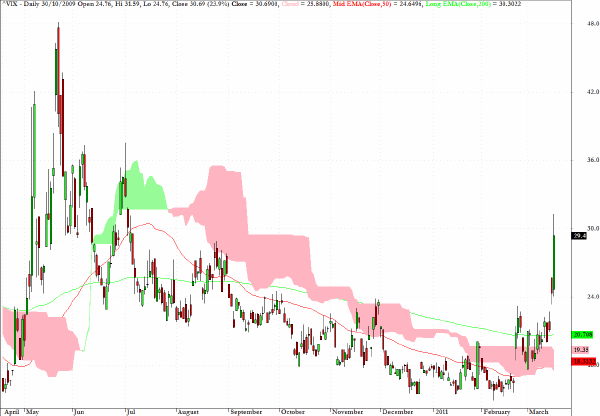
When I wrote the following on AUD/JPY in Tuesday’s column I did not think that the pattern would unfold within 24 hours. But in addition to a plunge by the Australian dollar - where liquidity tends to dry up when it is most needed, the major factor was a violent move up by the yen to a new post WW2 high against the dollar around 76 in Asian trading.
The lines drawn illustrate that this FX pair, having failed at the 84.40 level to regain a foothold above the upward sloping trend line through the lows, is now at risk all of the way down to the 77 level.
On February 18 the intraday high for Aussie/yen was 84.45 and at its low during Asian trading; today it touched 74.44 which is an extraordinary move for an FX pair and underlines the view that this currency pair is a barometer for risk appetite/aversion.
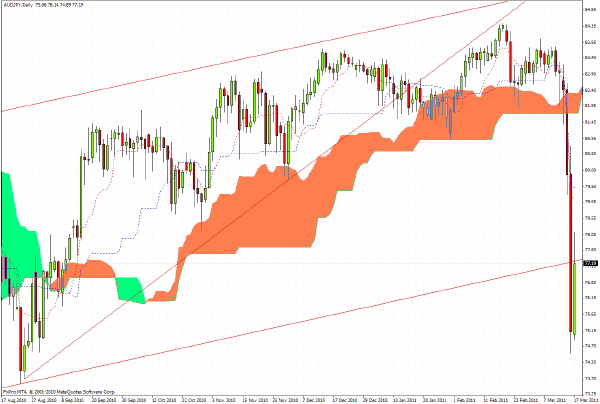
On the monthly chart AUD/CHF touched the base of the cloud formation in yet another powerful indicator of the extreme risk aversion which is coming to the foreground.
The usefulness of Ichimoku cloud patterns has been further illustrated by price actually finding some "support" at this level, but the underlying chart pattern raises a big question mark for those hoping for a benign macro risk environment in the longer term.
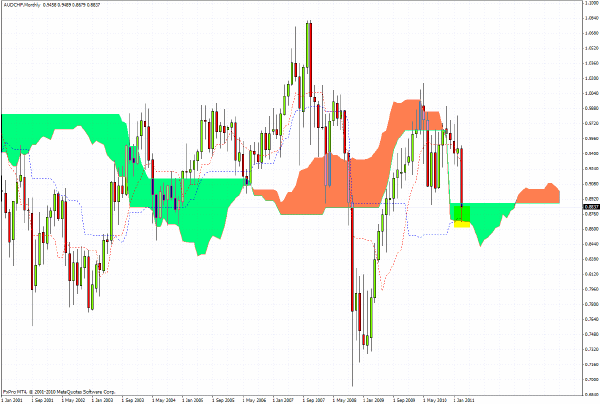
The performance from the DAX over the last two days (the chart does not include trading on Thursday March 17) lends credence to the notion that the faster they rise the faster they fall.
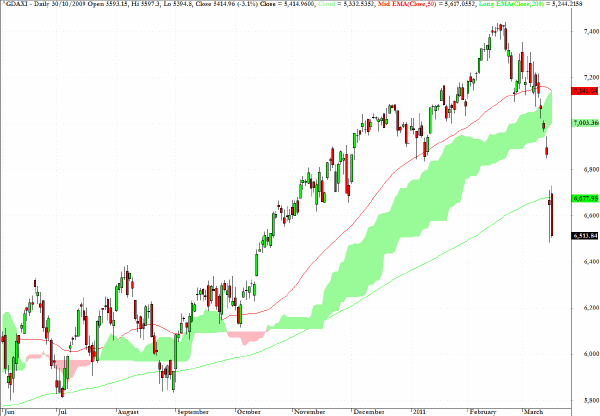
Here again are comments from Daily Form of March 8; the following comments were made regarding FEZ which tracks the EuroStoxx 50.
FEZ, is the exchange traded SPDR for the EURO STOXX 50 index which includes a relatively large allocation (almost 25%) to large European financial services companies including major European banks.
While the index itself does not have a huge following, and the volume in the ETF averages only about 50,000 shares per day, the price action and volume performance of the sector fund do provide insight into the general appetite for large cap European equitie
The concern with the current pattern is that the index has been stalling in a plateau formation which is now beginning to roll over with clear negative divergence in the MFI chart segment.
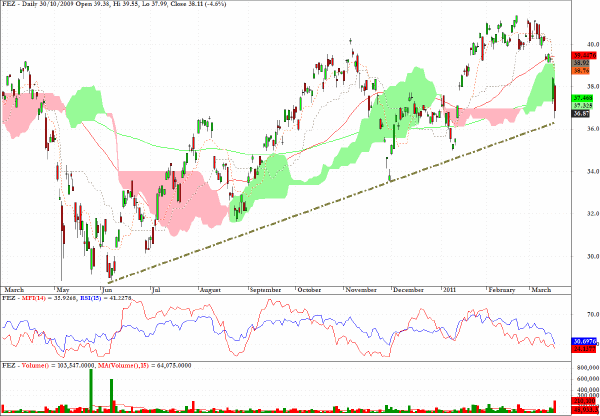
XLF is approaching a chart level where buying support should be expected.
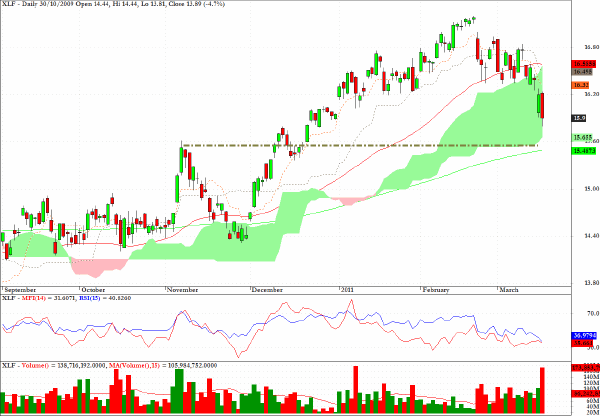
XOP, the exchange traded fund for the oil and gas exploration sector, shows a turn around in the MFI values and has one of the more favorable looking formations for the long side.
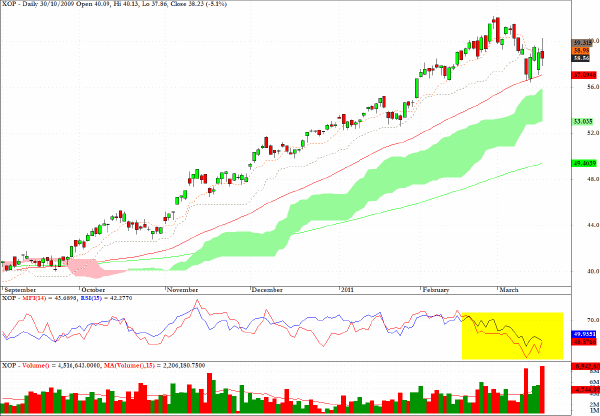
The sector fund DBV, a proxy for the FX carry trade, shows that the high yielding currencies are very definitely out of favor in the current environment.
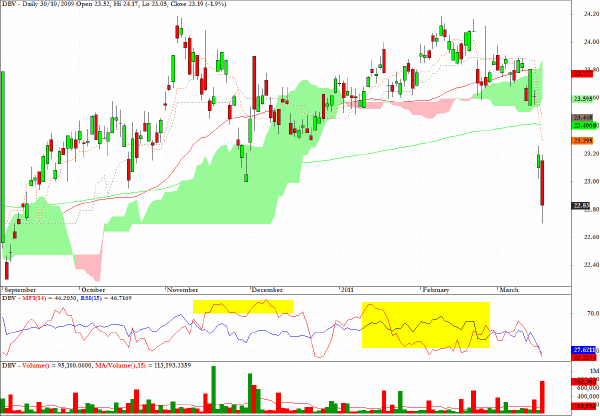
The French index CAC40 has clearly violated an uptrend line and, from a relative strength perspective, looks to be one of the least attractive among the major European indices.
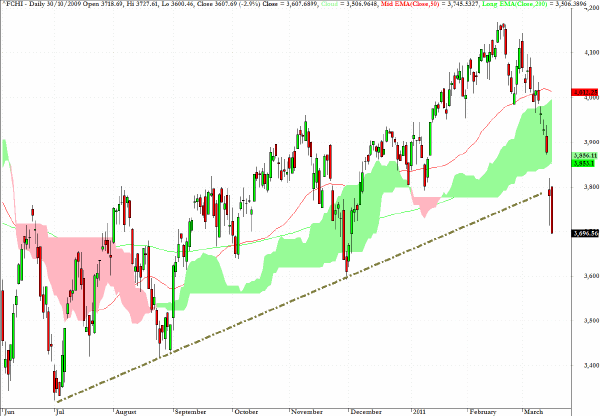
Clive Corcoran is the publisher of TradeWithForm.com, which provides daily analysis and commentary on the US stock market.
|